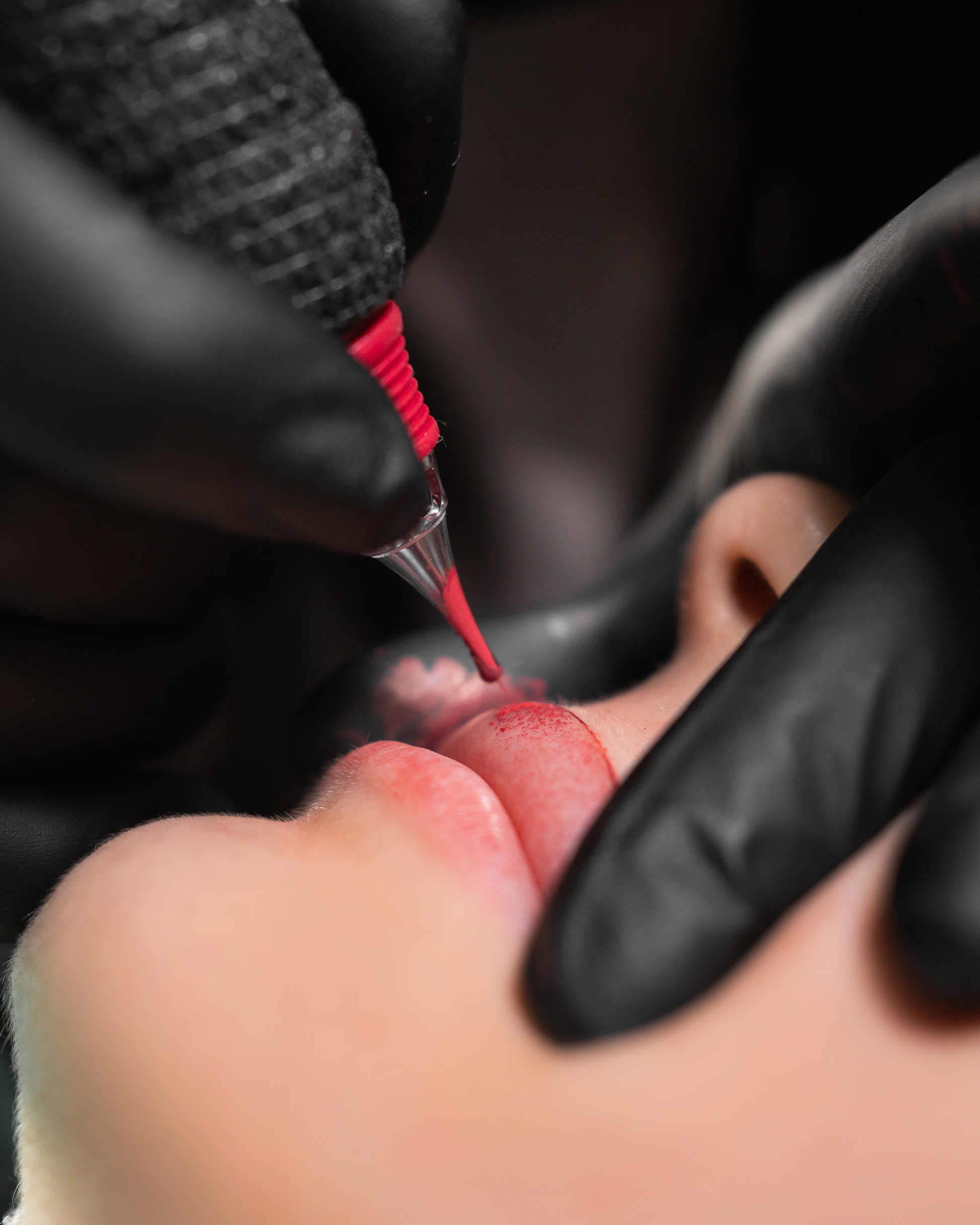OMBRE Lip Blush Tattoo by Master Artist Nargis

OMBRE Lip Blush Tattoo by Master Artist Nargis
What it is
It’s a semi-permanent cosmetic tattooing procedure applied to the lips to enhance colour, shape and definition.
The “ombre” effect means there is a gradient of colour: typically a darker tone along the outer border of the lips, fading smoothly toward a lighter tone in the centre.
The result is a blended, softly contoured finish rather than a solid block of colour.
How it works
-
A consultation is first held to determine lip shape, skin tone, desired colour intensity and gradient style.
-
The lips are cleansed and a topical numbing agent may be applied to reduce discomfort.
-
Using a tattoo machine or specialized tool, tiny deposits of pigment are implanted into the upper layers of the lip skin. In an ombre lip blush, the outer edges receive a denser pigment application, then it is blended inward toward the centre.
-
After the procedure, the lips undergo a healing phase: initial swelling, deeper colour, possible flaking or crusting. Once healing is complete, a follow-up or “touch-up” session may be recommended to refine colour and gradient.
Key benefits
-
Enhanced definition of lips: sharper borders, improved Cupid’s bow, more symmetrical shape.
-
The gradient effect gives a subtle illusion of fullness—making lips appear plumper without injectable fillers.
-
Long-lasting lip colour: instead of applying lipstick every day, you wake up with lips that already look polished.
-
Highly customisable: you can choose how subtle or bold the gradient is, pick a shade that complements your skin tone, and decide how dramatic the effect should be.
Things to consider / limitations
-
Healing time: Immediately after the procedure the colour may appear quite bright or darker than the final result; lips will heal over days and may look uneven during that time.
-
Maintenance: The pigment gradually fades over time (commonly 1-3 years depending on skin type, after-care, sun exposure, etc). Touch-ups will be required to maintain the effect.
-
It does not function like lip fillers in terms of adding volume beneath the skin: the effect is colour and definition enhancement, not structural fullness.
-
The skill and experience of the artist matter a lot: achieving a smooth gradient, natural look, and correct shape symmetry requires expertise.
-
There are possible contraindications/risks: if you have a history of cold sores, uncontrolled health issues, or are pregnant/medically compromised you’ll need to consult and possibly delay the procedure.
Who might be a good candidate
-
Someone who wants a more polished lip look with less effort—i.e., a “wake up with colour” result.
-
Someone who wants to enhance the shape, border and definition of their lips rather than dramatically change their size.
-
Someone comfortable with a semi-permanent result (i.e., lasts months to years, not forever).
-
Someone whose expectations are realistic about the healing process, maintenance, and how the colour will look softened over time.
Expected results and longevity
-
Immediately after: Lips will likely appear more intense in colour and perhaps slightly swollen; after healing the tone will soften and blend into its final appearance.
-
Longevity: With proper application and after-care, results can last up to 1-3 years (and sometimes more) before noticeable fading and requiring a refresh.
-
Follow-up: A touch-up session is often recommended between ~6-8 weeks after the initial procedure (to perfect the gradient or fill in areas that didn’t take fully) and then maintenance every few years depending on how the pigment holds.
After-care tips
-
Keep lips clean and moisturised during healing using a balm or recommended product.
-
Avoid excessive sun exposure, swimming, saunas, or exfoliation of the lips during initial healing.
-
Do not pick any flaking or crusting of the lips—let the scabs shed naturally to avoid uneven healing and pigment loss.
-
Follow your artist’s instructions for avoiding certain products (ex: strong exfoliants, certain lipsticks) during the healing phase.
-
If you have a history of cold sores: often prophylactic antiviral medication is recommended before the procedure, since the trauma can trigger an outbreak.
3 hours @ $799.00
Unavailable
